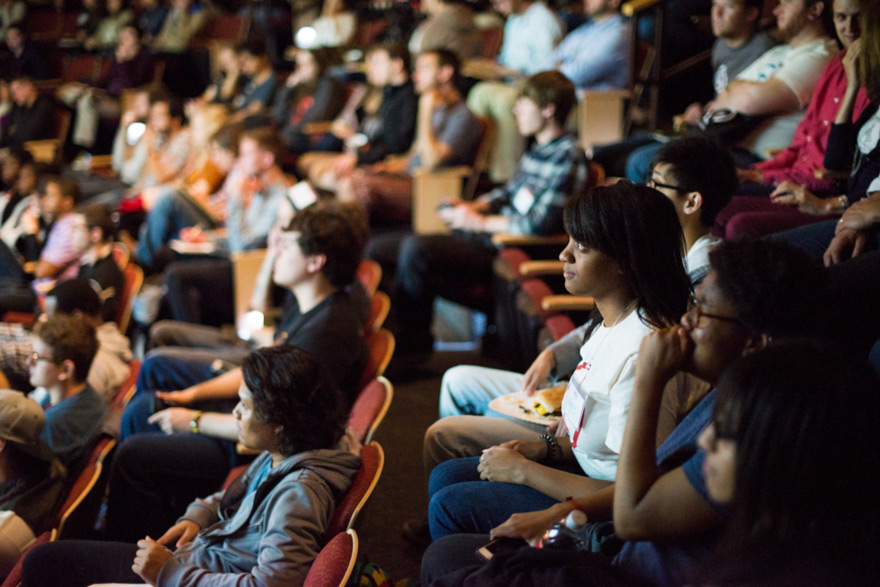
Want to recruit better in college and university environments? Of course. We all do. That’s the next wave of talent for organizations, right? But most of the approaches that we’ve been using in university recruiting for the last 15-20 years are flawed, and social media has probably muddied the water even more there. While there are admittedly some brands who kill it on social university recruiting, many miss the mark. But, never fear. There’s a better way.
A quick refresher on Representative Population Recruiting
We touched on the idea of RPP at the end of 2018. Essentially, it’s the idea that employee populations could (and should) mirror a larger sample. Here’s an example:
For example, though the U.S. Census only accounts for two gender options, it tells us that 50.8 percent of the population identifies as female and thereby 49.2 percent as male. Even taking into consideration other options, determining the gender breakdown of an organization should be reasonably straightforward. Set the percentages against different representative population samples to understand if current hiring practices reflect the right numbers. If not, then there’s work to be done.
In some ways, this is about diversity and inclusion, yes. It’s also about using the information available to us in smarter ways.
How could this be used in university recruiting?
Any number of ways:
- Get the demographic data on different universities that you target, as well as 10-20 that you don’t. Run those against broader American demographics and the current demographics of your company. This should tell you where to recruit to find more diversity in your ranks.
- Look at the same demographic data of each university you’re now targeting, and consider convening small sample sizes of each population to discuss messaging options. Now you can apply different messaging — phrases, branding efforts, visuals, etc. — when you recruit at that campus and see how effective it is based on what the target populations indicated in the smaller groups.
- Even look at the data around where target candidates might live at that university and consider adjusting your placement during on-campus periods. For example, if many seniors or second-year graduate students live on the west side of campus and the university is traditionally offering space at a student union on the east side, see if you can adjust your table spot — or even be in their walking path to campus. Then you’ll be the first interaction they have. Make it memorable and you might have yourself some amazing young talent.
“Data is the new oil”
“RPP is about drilling down into populations and understanding broader demographic trends”
We’ve been saying this for 10 years now. But how true is it, really? It definitely can be true, but for it to actually work as a statement, we need to be smarter about how we use data. RPP is about drilling down into populations and understanding broader demographic trends, what you might need in your organization as a result, and then trying to figure out where to locate those people and how to appeal to them.
University recruiting has been broken for decades, broadly speaking. It’s all table tents and “one size fits all” approaches and poorly contextualized messages on social media, with a hint of geofencing in the modern age. It’s not working, and it’s not getting organizations the young talent they need to drive forward. But RPP can help you isolate information more effectively and know where to go to find people who are currently lacking in your company.
Authors
Imo is the VP of Strategic Partnerships at OutMatch. Prior to OutMatch, Imo co-founded and served as CEO of Wepow, a popular video interview solution that is now part of the OutMatch Talent Platform. Imo’s work in the HR tech and Talent Acquisition space is driven by his passion to help organizations connect with talent.
Recruit Smarter
Weekly news and industry insights delivered straight to your inbox.




